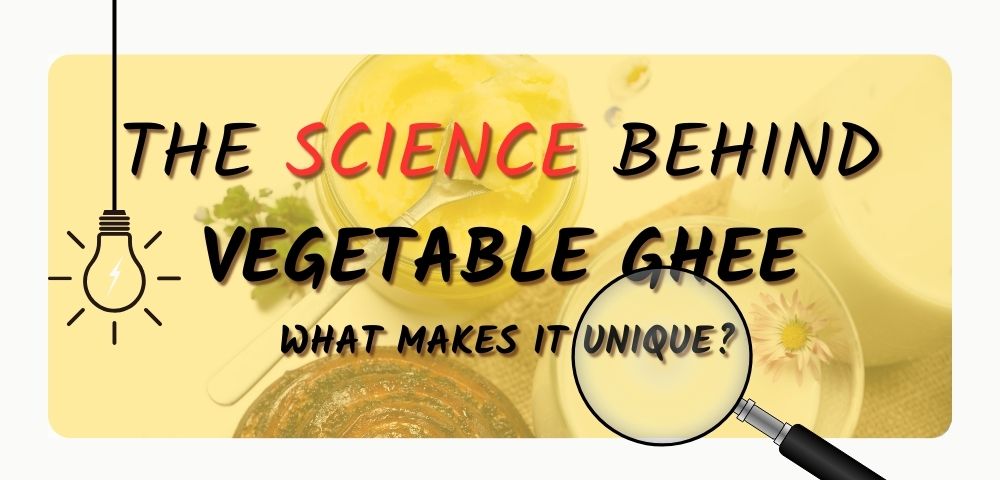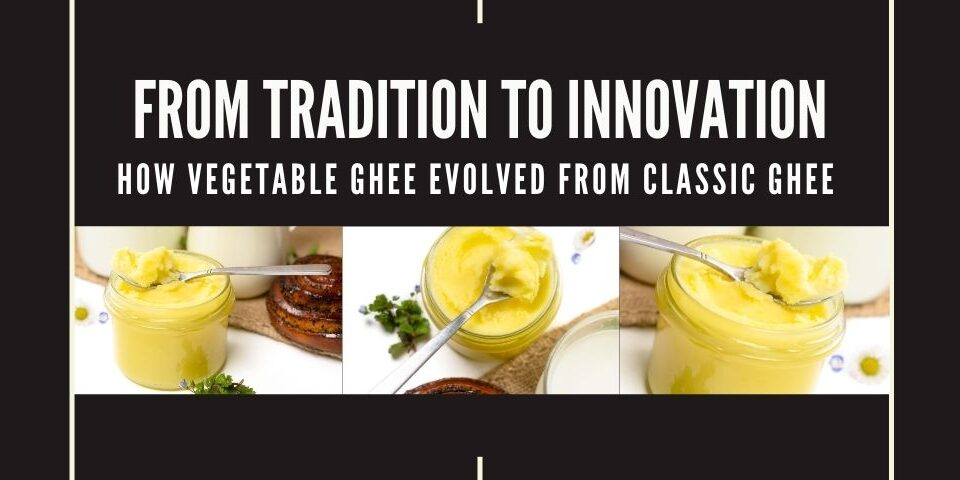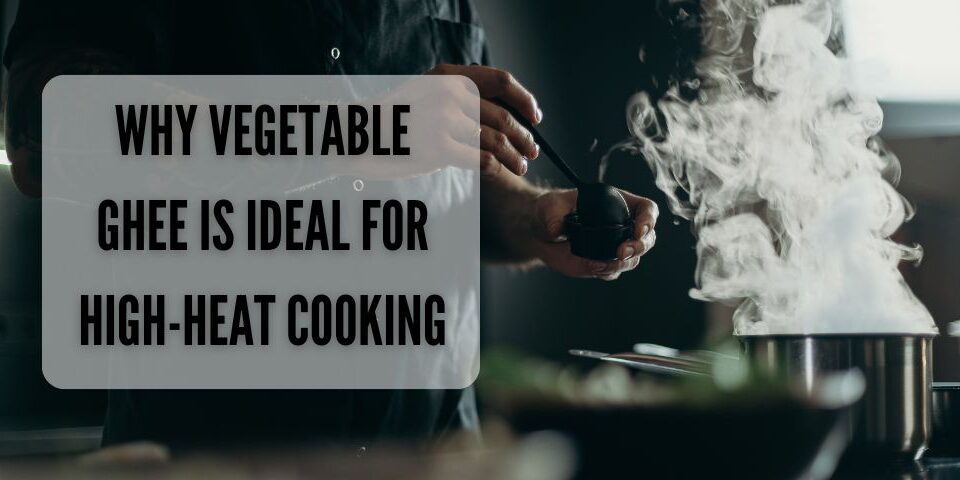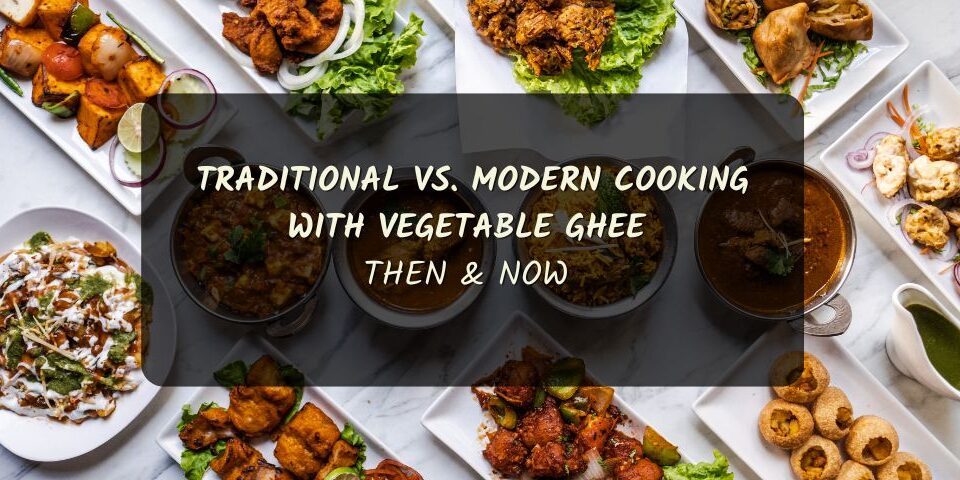
Vegetable Ghee for Deep-Frying: Pros, Cons, and Best Practices
February 10, 2025
How to Identify High-Quality Vegetable Ghee: A Buyer’s Guide
February 24, 2025The Science Behind Vegetable Ghee: What Makes It Unique?

Vegetable ghee is more than just a cooking fat—it’s a product of innovation that blends science with culinary tradition. While its uses in cooking are well-known, its unique properties often go unnoticed. So, what makes vegetable ghee so distinct compared to other fats? Let’s explore the science behind vegetable ghee to uncover what sets it apart.
What is Vegetable Ghee Made Of?
Vegetable ghee is primarily composed of partially hydrogenated vegetable oils. The hydrogenation process alters liquid oils into a semi-solid state, creating a product that mimics the texture and functionality of traditional animal ghee. Key components include:
- Fatty Acids: A mix of saturated and unsaturated fats that contribute to its stability.
- Antioxidants: Added to enhance shelf life and prevent rancidity.
- Emulsifiers: Help maintain its consistency and smooth texture.
The Unique Properties of Vegetable Ghee
- High Smoke Point
Vegetable ghee has a high smoke point, making it ideal for frying and deep-frying. This means it can withstand high temperatures without breaking down or releasing harmful compounds. - Neutral Flavor Profile
Unlike butter or animal ghee, vegetable ghee has a neutral taste, allowing the natural flavors of your dishes to shine. - Long Shelf Life
The hydrogenation process and the inclusion of antioxidants help vegetable ghee stay fresh for extended periods without refrigeration. - Cholesterol-Free
Since it’s plant-based, vegetable ghee does not contain cholesterol, making it a popular choice for those looking to maintain heart health. - Solid at Room Temperature
Its semi-solid nature is convenient for scooping and measuring during cooking, unlike liquid oils.
How is Vegetable Ghee Produced?
Vegetable ghee is created through a process called partial hydrogenation, where hydrogen is added to vegetable oil. This changes the oil’s structure, turning unsaturated fats into saturated or trans fats. The degree of hydrogenation can vary, affecting the product’s final consistency and health implications.
Why is Vegetable Ghee Unique in Cooking?
- Versatility: Suitable for frying, sautéing, baking, and even as a spread.
- Enhanced Stability: Unlike regular vegetable oils, ghee doesn’t oxidize quickly, which prevents unpleasant flavors.
- Rich Texture: Adds a creamy and luxurious texture to dishes, especially in baked goods and desserts.
Is Vegetable Ghee Healthier Than Other Fats?
While vegetable ghee has its benefits, such as being cholesterol-free and versatile, it’s important to consider the presence of trans fats, which can affect heart health if consumed in large quantities. Modern manufacturers often strive to reduce trans fats, so always check the nutritional label.
The Bottom Line
Vegetable ghee stands out due to its high heat tolerance, long shelf life, and adaptability in cooking. Understanding the science behind it not only highlights its unique properties but also allows you to make informed choices about incorporating it into your diet.
For more insights into its health benefits, check out our Benefits of Vegetable Ghee article!



